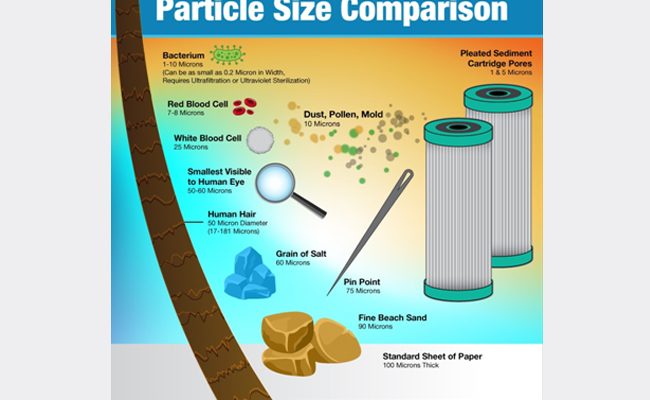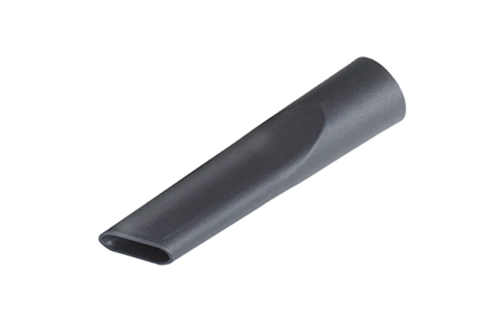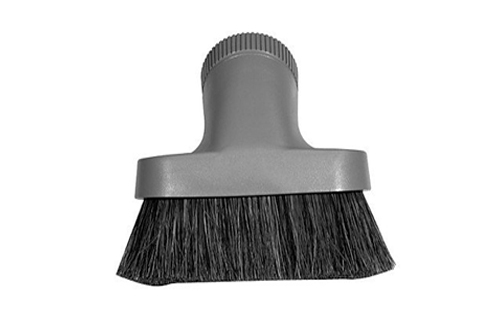
If you suffer from allergies, it’s crucial to keep a clean home that’s free of dust, dander, and pollen. These allergens can accumulate and make your runny nose, watery eyes, and sneezing even worse.
Vacuuming is one of the best ways to rid your home of these allergens and keep you feeling at your best during the spring.
In this article, we’ll be giving you 8 tips that aren’t just for people with allergies, but are also good vacuuming practices for any season. Creating a cleaner space will drastically improve your allergy symptoms and your mood.
Choose the right vacuum cleaner
HEPA filters
HEPA filters are probably the most important feature to look for if you have allergies. The science-y, technical term for it is High-Efficiency Particulate Air filter which basically means that it can suck up 99.9% of particles that are 0.3 microns or larger.
And to see how big a micron is, check out this awesome particle size comparison chart below.
These sizes are estimates but as you can see from the comparison, making sure you have a HEPA filter can help you reduce the amount of dust, pollen, mold, and even bacteria particles if they’re sitting around.
Sealed vacuum systems
In addition to a HEPA filter, also make sure the vacuum has a sealed system. This prevents the allergens, that you worked so hard to clean up, can’t escape through gaps in the vacuum cleaner.
We want to make sure you aren’t sneezing before, during, and after vacuuming.
Aside from allergy-specific features, there are many other things to look for in a high-quality vacuum cleaner.
Keep these questions in mind when selecting your next vacuum: Does it have a powerful and long-lasting battery? Do you want a cordless vacuum cleaner or a corded one? What attachments are available?
Vacuum Frequently
Depending on how bad your allergies are and what kind of surfaces you have, you may need to vacuum more frequently than the recommended once a week.
Vacuuming more frequently prevents allergens from building up and potentially drifting into hard-to-reach crevices.
It also reduces the chances of them becoming airborne when we walk or move around the room.
High-traffic areas
Make sure you give extra attention to areas in your home with higher foot traffic like hallways and living rooms.
These areas tend to accumulate more allergens that are brought in by people so they especially need more frequent vacuuming than other areas within the home.
For carpeted stairs, it’s helpful to use a vacuum cleaner that has suitable attachments to make your life a bit easier.
Pet hair removal
We all absolutely adore our pets but pet hair can be a huge contributor to your allergy symptoms if you have pets.
You may not be allergic to pets, but dust and pollen could stick to their fur. Similar to high-traffic areas, pay special attention to your pet bedding, the furniture, and any other area your pets frequent.
There are even some vacuum cleaners that are specifically made to clean up fur more easily. The main thing to look for in these vacuums is the suction power, which may be worth the investment if you find that your allergies are severe.
Vacuum the Entire Room
Floors, carpets, and rugs
Don’t skimp out on the cleaning! When vacuuming, make sure to clean all floor surfaces, including carpets, rugs, and hard floors.
Carpets and rugs can trap allergens within their fibers, so it’s essential to vacuum them thoroughly to remove as much allergen material as possible. It may take a few passes and a deep brush attachment to get most of the particles out of carpets depending on how thick they are.
Smoother surfaces like hardwood or tile, are much easier to clean up so no special attachment is required. Just make sure you’re vacuuming the entire surface because the air coming from the vacuum cleaner may push allergens across the smooth surface.
Upholstery and curtains
In addition to floors, allergens can also accumulate on upholstery and curtains. Be sure to use the soft brush attachment or turn down the suction power of the vacuum if you can to prevent sticking to the curtains.
You could also gently pat down the curtains to shake off as much dust and dander as you can and then vacuuming the floor.
For upholstery, if the cushions can be removed, remove them and vacuum both sides as well as the bottom of the couch or sofa.
High and low surfaces
Allergens can also settle in the strangest places like on top of refrigerators or in forgotten corners of your room from when we move around or from any slight breeze that may come in.
Making sure you don’t forget about these surfaces can help reduce allergy symptoms tremendously.
Use the Right Vacuum Attachments
Crevice tool for corners and tight spaces
Most vacuum cleaners come with a variety of attachments or allow additional attachments to be bought and used.
For hard-to-reach areas, the best attachment is the crevice tool which is long and narrow. This will help you get into tight corners, along baseboards, under furniture, and other tight spaces that require maneuverability.

Image by Lowe’s
Dusting brush for delicate surfaces
The dusting brush attachment is another great tool for cleaning more delicate surfaces without having to apply any pressure or using the weight of the vacuum cleaner.
This attachment is perfect for things like lampshades, picture frames, and blinds without disturbing them too much. The long bristles help brush allergens off these surfaces which are immediately sucked into the vacuum.

Image by Walmart
Maintain Your Vacuum Cleaner
Regularly replace or clean filters
To keep your vacuum cleaner functioning properly, make sure to regularly clean or replace filters.
With HEPA filters, it’s very important to keep them clean to allow for the full strength of the filter to work in reducing allergens. Be sure to follow the manufacturer’s guidelines to determine the filter change schedule.
Empty the dustbin or change bags
Regularly emptying the dustbin or changing the vacuum cleaner bag is another important aspect of vacuum maintenance. If your dustbins or bags are overfilled, that can reduce the suction power or even push allergens back out into the air.
Some vacuum cleaners have lines that indicate when to empty them but in general, consult the user manual to know when you should empty the dustbins.
Inspect and clean brush rolls and hoses
Sometimes hair, thread, or other materials get tangled up in brushes or the hose itself so periodically inspect the vacuum cleaner itself as well as its attachments.
Clearing out any blockages will help it work at its full potential.
Vacuum in a Slow and Methodical Manner
Allowing time for the vacuum to capture allergens
Remember that vacuuming is not a race unless you entered a vacuum competition if those exist. It’s important to go fast so that you don’t spend your entire weekend cleaning, but slow enough to give the vacuum cleaner enough time to capture allergens.
Going too fast will cause you to miss a few spots and also kick up some of the particles in the process. So always remember to take your time.
Overlapping strokes
No matter what surface you’re vacuuming, but especially with carpet, always make sure to go over it a few times. This will ensure you’re picking up as much as you can.
You won’t be able to pick up everything, but reducing as many allergens as you can from your home will help with your allergy symptoms.
Ventilate the Room After Vacuuming
Using an air purifier
After vacuuming your home, it’s essential to ventilate the room to help remove any allergens that may have become airborne during the cleaning process.
Ventilating the room for at least 15 to 30 minutes can significantly improve indoor air quality and reduce allergy symptoms. However, it’s best to ventilate by using an air purifier if possible.
This will help remove any remaining allergens that may have been stirred and are floating in the air.
Maintaining a clean home is crucial for your physical and mental well-being, especially for allergy sufferers. By implementing the vacuuming tips outlined in this article, people who suffer from allergies can be proactive and better manage their symptoms in a healthier environment.
Leave a Reply